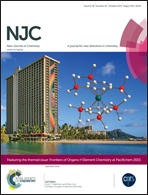Efficient mineralization of benzoic and phthalic acids in water by catalytic ozonation using a nickel oxide catalyst
Abstract
Organic acids (OAs) are usually used as refractory model compounds that require prolonged reaction time for their mineralization by different treatments. In this study, benzoic and phthalic acids in aqueous solution were significantly degraded and mineralized by catalytic ozonation in the presence of nickel oxide (NiO). For instance, only 42% mineralization was obtained by direct reaction with molecular ozone, while by catalytic ozonation 98% was achieved. These surprising results led to study in depth the role of NiO in the catalytic ozonation of both organic acids. With the aim of identifying the surface species responsible for the high activity of NiO, X-ray photoelectron spectroscopy (XPS) and high performance liquid chromatography (HPLC) were used as the main analytical tools. According to the results, the mineralization of both organic acids was directly influenced by the organic groups adsorbed onto the NiO surface. Therefore, NiO plays a relevant role as a catalyst forming complex surface compounds which are subsequently decomposed increasing the mineralization efficiency. In addition, a simplified kinetic study was conducted to characterize the effect of NiO concentration on the removal efficiency of both organic acids and the accumulation and degradation of the main byproduct (oxalic acid). These results were explained in terms of a combination of two reaction mechanisms such as conventional ozonation and indirect reaction based on ˙OH radicals.


 Please wait while we load your content...
Please wait while we load your content...